It’s time to acknowledge that the dream of ‘net zero’ emissions is dead.
The world’s top three carbon emitters are China (31.5% of total), the United States (13.0% of total), and India (8.1% of total).
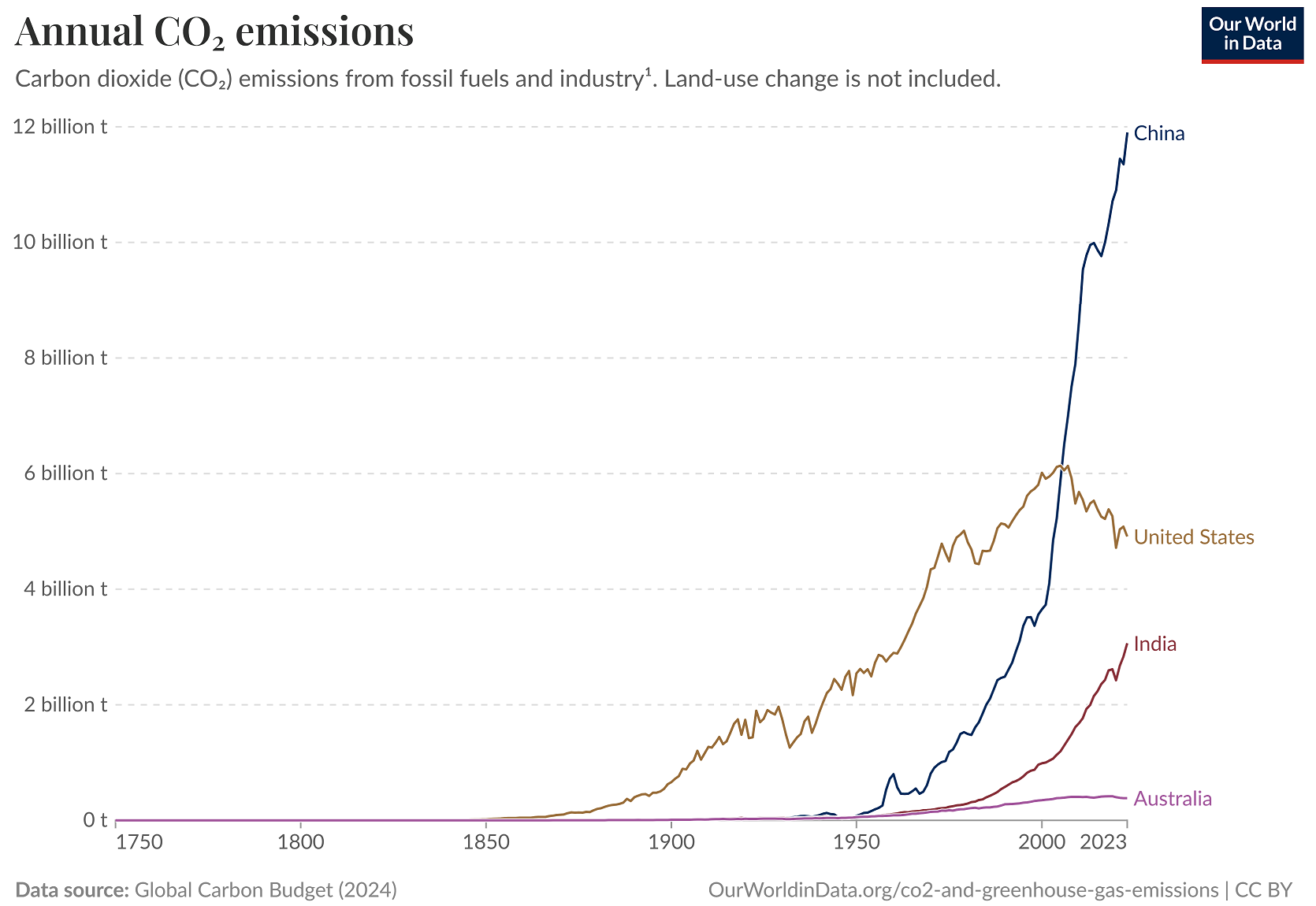
In 2023, these three countries accounted for more than half (52.6%) of global carbon emissions.
As shown above, China and India are rapidly increasing their emissions while the developed world is reducing them.
President Trump on Tuesday signed four executive orders aimed at boosting the US coal industry. Trump aims to revive the nation’s coal industry by streamlining project approvals and opening up more federal land for coal mining.
The four executive orders include designating coal as a critical mineral and preventing ‘discrimination’ against the use of coal for power generation rather than greener fuels.
President Trump said his administration is “bringing back” an industry that was abandoned by his White House predecessor, Joe Biden. He added that the US has more coal than any other country; he also noted that Australia has “fantastic” amounts of coal but sells a lot of it to China.
“I call it beautiful, clean coal. I told my people, never use the word coal unless you put beautiful, clean before it”, President Trump proclaimed.
Trump’s executive orders reverse decades of American environmental policy, leading to the closure of coal-fired power plants and their replacement by gas-fired generation and renewables.
Coal currently accounts for only around 15% of all power generated in the United States, down from more than 50% in 2000, according to the US Energy Information Administration.
The US is currently the world’s second-largest carbon emitter, and the nation’s coal use and emissions will inevitably rise following President Trump’s announcements.
The world’s largest and third-largest emitters, China and India, are also expanding their coal consumption.
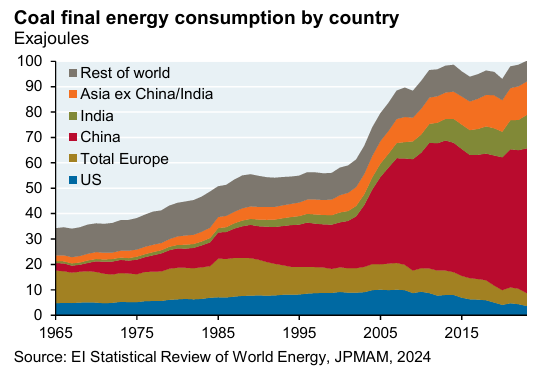
China is the world’s largest coal producer, importer, and user, burning 30% more coal than the rest of the world combined.
In the decade to 2024, China’s thermal coal electricity generation increased by 51% to a record 6,344 billion kWh.
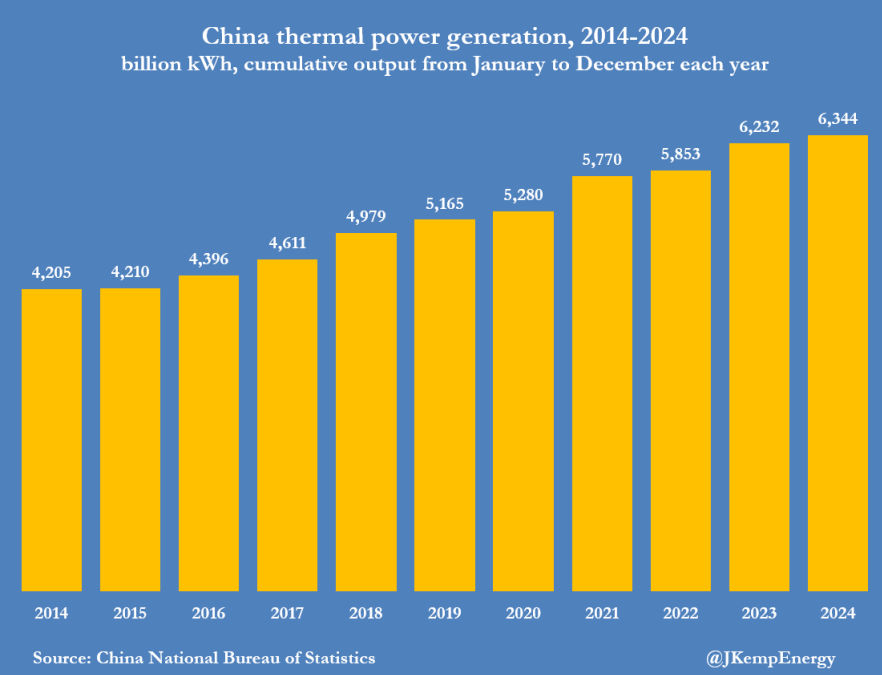
Chinese domestic coal output reached a high of 4,759 million tonnes in 2024, up from 4,658 million in 2023 and 4,496 million in 2022, in response to government requests to increase inventories and assure power reliability.
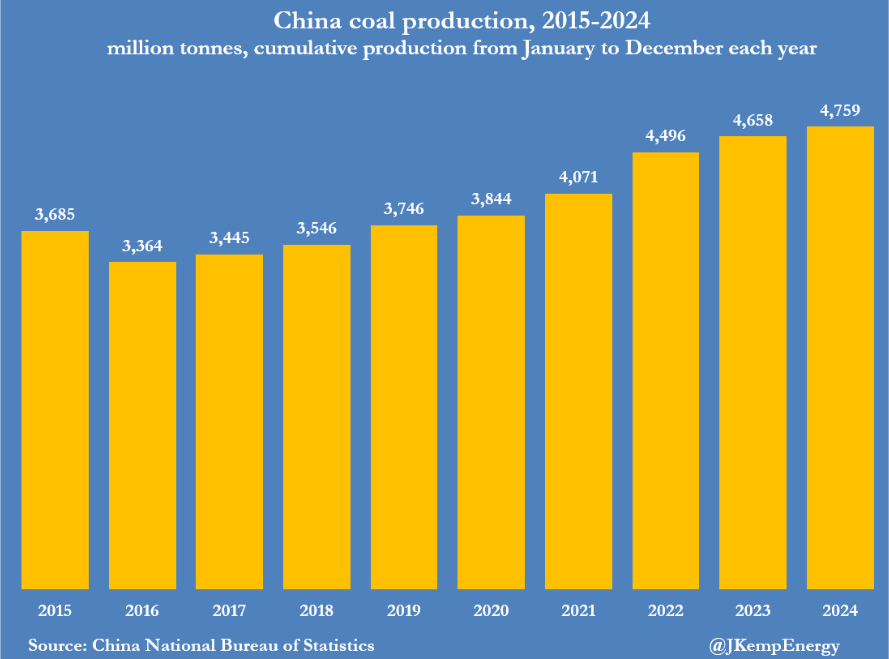
Chinese coal imports reached a record 543 million tonnes in 2024, up from 474 million in 2023 and 293 million in 2022.
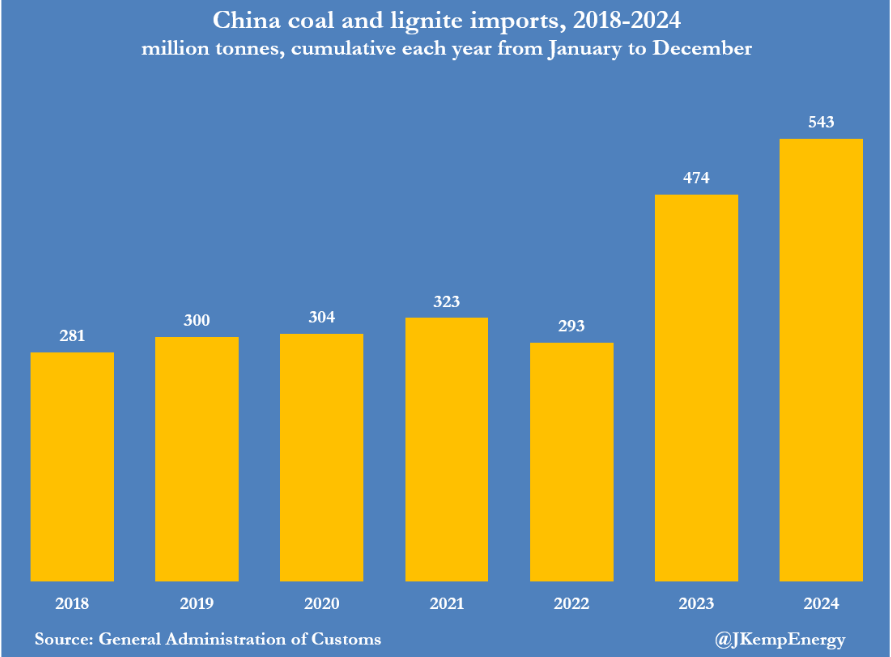
Every quarter, the Chinese government grants construction permits for new coal-fired power plants and mines.
In 2024, thermal coal-fired plants accounted for two-thirds of total Chinese electricity generation.
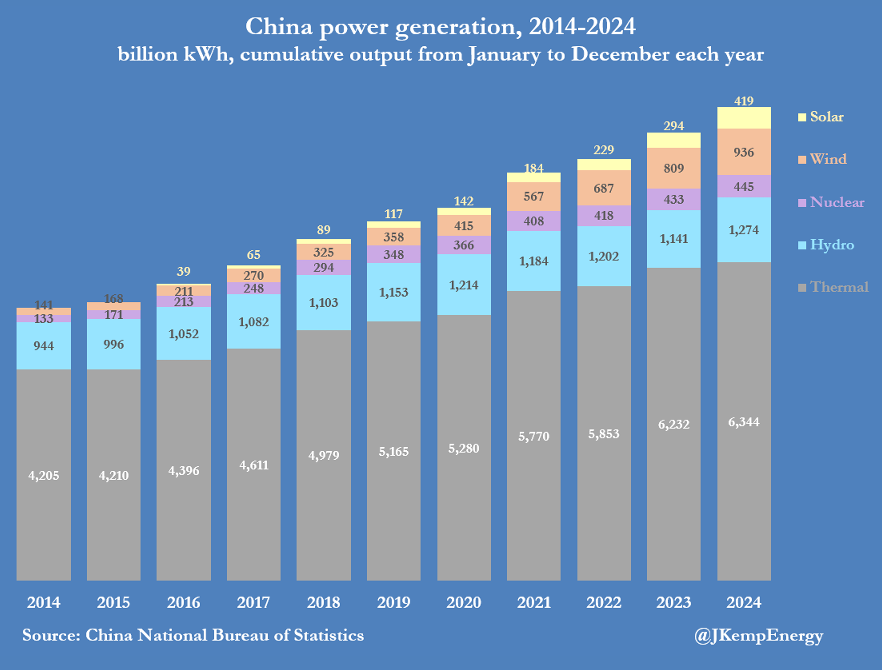
In 2024, India’s coal-fired electricity generation set a new record.
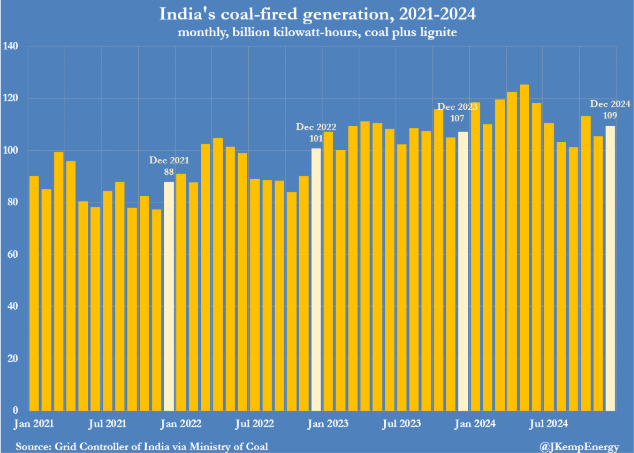
India’s coal-fired generation increased by 73% over the decade to 2023.
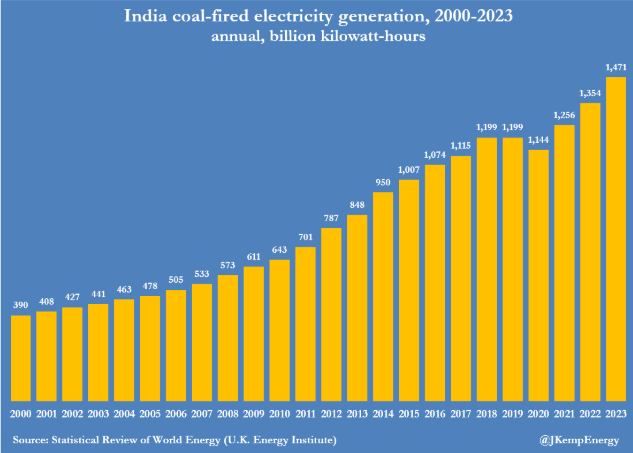
Coal accounted for three-quarters of total Indian electricity generation, and its share has risen since the turn of the century.
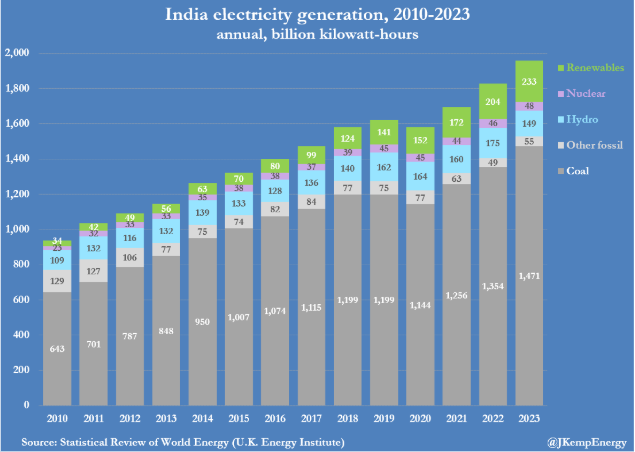
The Indian government has directed coal generators to accelerate capacity increases, postpone planned retirements, and purchase more equipment in order to maintain and enhance capacity until at least 2030.
As illustrated below, China and India have increased their coal use faster than the developed world has reduced it.
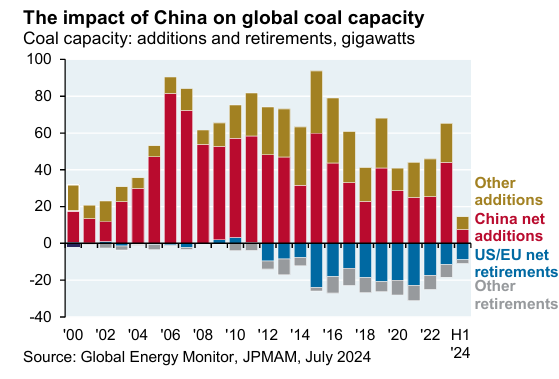
Following President Trump’s executive orders, the US will add to the global expansion of coal use.
According to Statista, China (1,161), India (285), and the United States (204) had a combined 1,650 coal-fired power plants in operation in 2024, versus Australia’s 18.
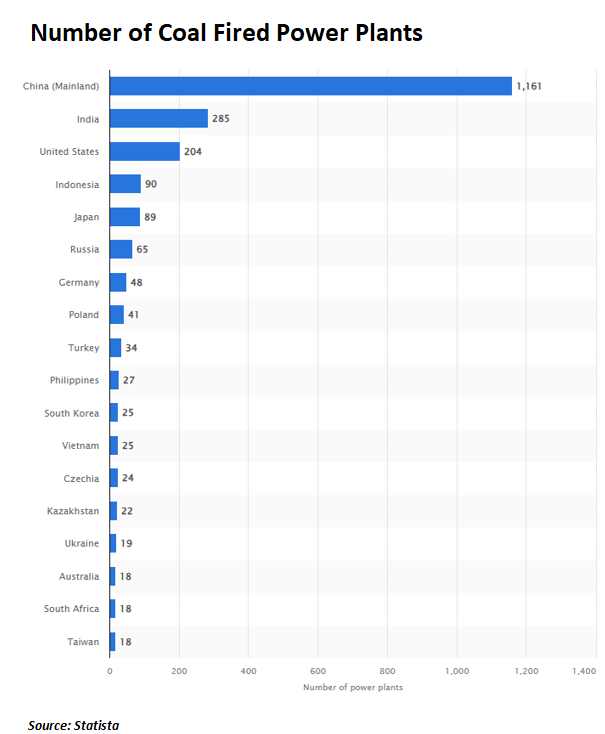
All three nations will expand their coal use in the years ahead.
This raises the obvious question: why should Australia—a rounding error on the world carbon stage—sacrifice itself at the ‘net zero’ altar when the three largest emitters won’t do the same?
Australia exports around six times more coal than it burns at home and exports more than four times more gas than it burns domestically.
Why not burn more coal and gas domestically and give ourselves cheap and reliable energy rather than exporting energy security to Asian nations like China to burn instead?
Denying ourselves cheap and reliable energy merely drives up inflation and the cost of living and drives manufacturing out of Australia to China, making Australia a less diversified and self-sufficient economy.
Burning more hydrocarbon energy at home, rather than exporting it, also makes no difference to global emissions.
Australia’s pursuit of ‘net zero’ emissions is futile and self-destructive without participation from the world’s largest emitters: China, India, and the US.
Australia shouldn’t try to be a ‘net zero’ hero. We cannot save the world. But we can save ourselves.

